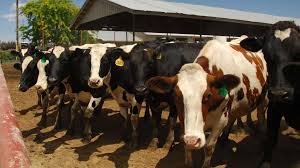The highly dangerous H5N1 avian influenza virus is spreading among dairy cattle due to inadequacies in agricultural procedures, according to reports from the U.S. Department of Agriculture (USDA). This presents a challenge to biosecurity for dairy farmers nationwide.
Shared vehicles and equipment, personnel who work on multiple farms, and animal movement are the three main risk factors for the ongoing transmission between farms, according to the findings, which are presented in two new epidemiologic reports by the USDA’s Animal and Plant Health Inspection Service (APHIS).
In the Texas Panhandle region, the H5N1 outbreak in dairy cattle initially appeared in March 2024. Subsequently, the virus has been verified in nine states’ worth of dairy herds, with some cases spreading to wild birds and even two human cases showing minor symptoms.
The fast expansion within dairy farms indicates worrying biosecurity breaches, despite genetic evidence suggesting a single introduction from wild birds. APHIS representatives are emphasizing how crucial it is to strengthen biosecurity protocols in order to prevent further spread.
Susan Kelley, Deputy Chief Veterinary Officer of the USDA, stated, “The bigger picture is that enhanced biosecurity is really critical,” highlighting the need for tougher controls to stop the virus from spreading between farms.
A substantial danger element is created when farms share trucks and equipment. Because the virus can cling to surfaces, naive agricultural workers may unintentionally become carriers and spread it from farm to farm via their clothes or boots.
Another thing to be concerned about is animal movement. Although the mobility of lactating dairy cattle was restricted by a Federal Order in April, the continuous spread indicates that tighter regulations for animal movement inside and between farms are necessary.
In an effort to resolve the issue, the USDA is acting. Financial support initiatives have been unveiled to assist farmers in enhancing on-site biosecurity and making up for milk production losses in impacted cows. They are also developing and implementing biosecurity policies based on current secure milk supply procedures in collaboration with industry stakeholders and state partners.
For employees who travel between farms, such as milk transporters, veterinarians, and feed truck drivers, these plans will incorporate strengthened biosecurity precautions.
Public health professionals are appropriately concerned, even if the current risk to human health from the H5N1 virus infecting dairy cattle appears to be low. In order to enhance laboratory screening capabilities for H5N1 in dairy products, the USDA is working with the Centers for Disease Control and Prevention (CDC) and the Food and Drug Administration (FDA).
Customers should rest easy knowing that the government response places the security of the food supply first. To guarantee the safety of milk and meat from impacted livestock for human use, testing procedures are in place.
But the ongoing H5N1 outbreak among dairy cattle emphasizes how crucial it is for farms to have strong biosecurity protocols. The USDA’s findings should be seen as a wake-up call to the industry, as they call for more stringent measures to safeguard public health, animal health, and the country’s food supply.




